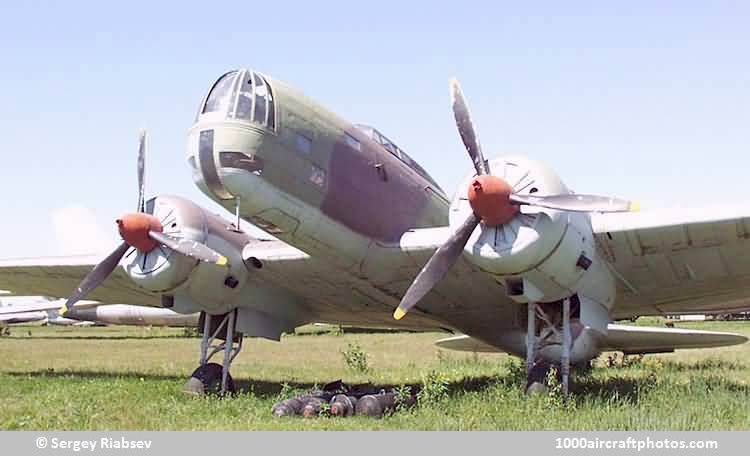During the 1930s, Soviet designers produced a number of long-range aircraft which made several outstanding long-distance flights and drew attention to the capabilities of the Soviet air force. Of these aircraft, however, the Tupolev ANT-25 and ANT-37 were not successful in their military versions.
Sergei Vladimirovich Ilyushin was more successful in designing a long-range bomber able to carry a reasonable bomb load (one ton), fast (not less than 217 mph (350 kmh), at a reasonable height, and over a distance of 1,864 mls (3,000 km). Designated TsKB-26 (Central Design Bureau Number 26), the first prototype of the Ilyushin bomber made its first flight in 1935 with Vladimir Konstantinovich Kokkinaki at the controls, thus beginning a designer/test pilot combination which lasted for over thirty years.
The TsKB-26 was a twin-engined low-wing cantilever monoplane of metal construction with a retractable landing gear, and was powered by two 800 hp Gnome & Rhône K-14 fourteen-cylinder radial air-cooled engines driving three-blade fixed-pitch metal propellers. Possibly because of the aircraft's large fuel capacity, there was only room in the internal bomb bay for 2,204 lb (1,000 kg) of bombs; but over short distances an additional 5,511 lb (2,500 kg) could be carried under the wing center section. Defensive armament consisted of a 0.30 in (7.62 mm) machine gun in the nose and another in the hand-operated dorsal turret. The crew consisted of pilot, navigator/gunner and radio operator/gunner. Like most contemporary Gerrnan and American, and other Russian, medium bombers, the TsKB-26 had a comparatively narrow fuselage and a fighter-type cockpit which, in the case of the TsKB-26, was open.
The TsKB-26 under test had a range of 2,485 mls (4,000 km) with an 1,102 lb (500 kg) bomb load when flying at 199 mph at 15,090 ft (320 kmh at 4,600 m). It was extremely maneuverable, and, at the 1936 May Day parade over Red Square, Kokkinaki demonstrated this maneuverability by looping the TsKB-26. In July 1936 Kokkinaki set up two new international class records for altitude with payload, which he then proceeded to eclipse in August and September:
